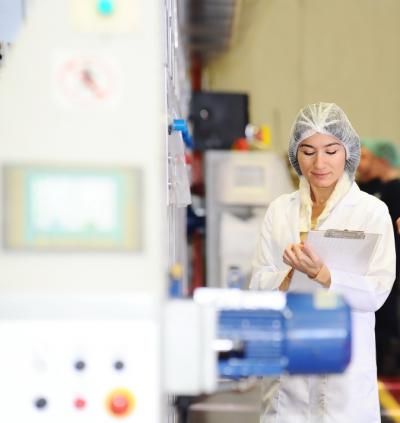February 26, 2014

February 26, 2014

 Your manufacturing equipment and processes have been established, qualified and validated; all you have to do now is rake in the profits right? Think again, the process of maintaining the validated state and demonstrating continuous control is a costly and time consuming effort. The 2011 FDA Guidance on Process Validation certainly requires a Stage 3 - Continued Process Verification effort. But what is the expectation and extent that biologics or pharmaceutical manufacturers have to go through to establish a compliant and robust program? Periodic requalification efforts run the full spectrum throughout the industry while the FDA guidance has its own set of expectations. But most importantly, what are these efforts looking to accomplish anyway?
Your manufacturing equipment and processes have been established, qualified and validated; all you have to do now is rake in the profits right? Think again, the process of maintaining the validated state and demonstrating continuous control is a costly and time consuming effort. The 2011 FDA Guidance on Process Validation certainly requires a Stage 3 - Continued Process Verification effort. But what is the expectation and extent that biologics or pharmaceutical manufacturers have to go through to establish a compliant and robust program? Periodic requalification efforts run the full spectrum throughout the industry while the FDA guidance has its own set of expectations. But most importantly, what are these efforts looking to accomplish anyway?
As is to be expected in a growing and dynamic industry, there is a vast spectrum of requalification frequency, extent of effort and monitoring samples. Some firms are conducting one run performance qualifications on each and every Cleaning-In-Place and Steam-In-Place circuit in their facilities. Others are doing a cursory check to ensure that preventative maintenance and change controls did not knock their equipment out of the validated state. Although both efforts are important, they are complimentary efforts that when taken alone do not fully achieve a comprehensive program as described in Stage 3 of the lifecycle approach presented in the 2011 FDA Guidance on Process Validation. Certainly checking on the performance of key auxiliary processes is important but once validated, and barring any procedural changes, shouldn’t those processes remain constant? What about degrading function or residual build up over time, you may ask? Well then, those efforts would be captured in a preventative maintenance program that looks beyond nuts, bolts and gaskets. Training of the GMP equipment maintenance staff to look beyond the immediate work order issue may forestall other issues such as jammed rotating spray balls or cold spots due to condensation build up at faulty steam traps or low points. It is granted that proper engineering design should alleviate if not eliminate some of these concerns but equipment components do have finite lifespans that can lead to other structure and function issues. A combination of paper based analysis of control measures on the equipment and physical testing and sampling of processes done at a frequency commiserate with the level of criticality and risk to the process should be the standard that all firms strive to achieve.
Does looking at preventative maintenance records and requalifying a few manufacturing processes constitute a program that meets the expectations of the 2011 FDA Guidance on Process Validation, most especially Stage 3- Continued Process Verification? One might argue that these are two different efforts, and perhaps they are, but do we as an industry not claim that our equipment and processes are fit for their intended use and purpose? The structure and function of equipment and processes must work together to achieve the critical quality attributes that are our indicators of safe and efficacious products. Certainly the Process Validation Guide is advocating the statistically based sampling and control charting of the manufacturing process. On the surface one might think that only changes to critical process parameters may lead to shifts in process performance. But would it not be beneficial to a manufacturer to understand the underlying sources of variability such as why certain low level bioburden counts appear on fifty percent of their batches? The trending of samples pulled from the manufacturing process is indeed of utmost importance but the Guidance does state that “Maintenance of the facility, utilities, and equipment is another important aspect of ensuring that a process remains in control”.
Ultimately, what is the benefit to a responsible, compliant and business smart manufacturing corporation of continued process verification? There are many obvious benefits that can be enumerated. Some benefits include; a safe and continuous product supply, few reworked or recalled batches, longer manufacturing production and profitability time, fewer process deviations, fewer emergency change controls and maintenance efforts to document. The Process Validation Guidance suggests that collection of data regarding the performance of all aspects of the manufacturing process will not only lead to continual assurance that the process remains in a state of control but that the data gathered might suggest ways to improve and/or optimize the process by shedding light on those aspects of the process that are critical and those that may be streamlined. While the regulatory agencies and biologics or pharmaceutical manufacturing firms may emphasize different benefits, we can all agree that a satisfied consumer of a profitable product is the grand aim we all have in view.
The onus of maintaining a manufacturing facility, its GMP equipment, processes and products in a qualified state is upon all those working in the biologics and/or pharmaceutical industry. The FDA’s Process Validation Guidance clearly sets a Stage 3 expectation for Continued Process Verification including not just a limited view of the manufacturing process and its critical process parameters and critical quality attributes but also all other aspects, physical and procedural requalification and maintenance, necessary to maintain and deliver safe and efficacious products to the consumer.
Learn more about ProPharma Group's Process Validation services. Contact us to get in touch with Alfredo or one of our other subject matter experts for a customized presentation.

June 5, 2014
As a biopharmaceutical company matures and new products are added to its portfolio, expansion of its facilities, systems and Quality Control is a natural outcome. The growth in the Quality Control...

December 15, 2014
My last blog focused on the industry trends concerning cleaning validation verification. Through a quick poll we found that out of twenty-three respondents, approximately fifty (50) percent are doing...